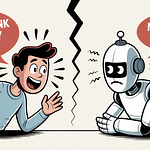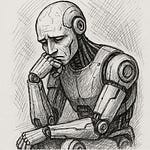Paper: ImageNet Classification with Deep Convolutional Neural Networks
Authors: Alex Krizhevsky, Ilya Sutskever, Geoffrey Hinton
Published: 2012 (NeurIPS)
Subtitle:
🧠 What’s This Paper About?
This is the paper that changed everything.
In 2012, Alex Krizhevsky (with Ilya Sutskever and Geoffrey Hinton) entered their deep convolutional neural network into the ImageNet competition—and won by a mile. Their model, later dubbed AlexNet, cut the top-5 error rate by over 10 percentage points, stunning the machine learning world and reigniting interest in neural networks.
This wasn’t just a better model. It was a paradigm shift—from hand-engineered features to learned representations, from shallow classifiers to deep end-to-end models.
🔍 Key Innovations
Deep Convolutional Architecture: 8 layers, including 5 convolutional and 3 fully connected, with ReLU activations for nonlinearity.
GPU Training: Trained on two NVIDIA GTX 580 GPUs using data/model parallelism—this was key to making the large architecture feasible.
Data Augmentation: Random cropping, horizontal flipping, and RGB jittering were used to reduce overfitting.
Dropout Regularization: Introduced dropout to the fully connected layers to improve generalization.
🖼️ Why ImageNet?
ImageNet was (and still is) the go-to benchmark for large-scale image classification: over 1.2 million images across 1,000 categories.
Previous methods relied on handcrafted features and shallow classifiers. AlexNet showed that a deep neural network trained end-to-end could not only match but massively outperform those systems.
Top-5 error rate:
Previous SOTA (2011): ~26%
AlexNet (2012): 15.3%
It wasn’t even close.
🔥 Why This Paper Changed the Game
It legitimized deep learning in the computer vision community.
It launched careers, research labs, and companies—including the boom in GPU-based AI research.
It’s the origin story of many foundational techniques used in modern CNNs and vision transformers.
If you’ve ever used an AI that recognizes images, detects objects, or labels faces—it probably owes something to AlexNet.
🎧 Podcast Summary
The podcasters you hear are AI-generated- created using the “audio overview” feature in Google Notebook.
📚 Appendix A: Sources and Show Your Math
#AlexNet #DeepLearning #ComputerVision #ImageNet #NeuralNetworks #TheWolfReadsAI #AIResearch #MachineLearning #ConvolutionalNeuralNetworks #DeepLearningWithTheWolf















Share this post